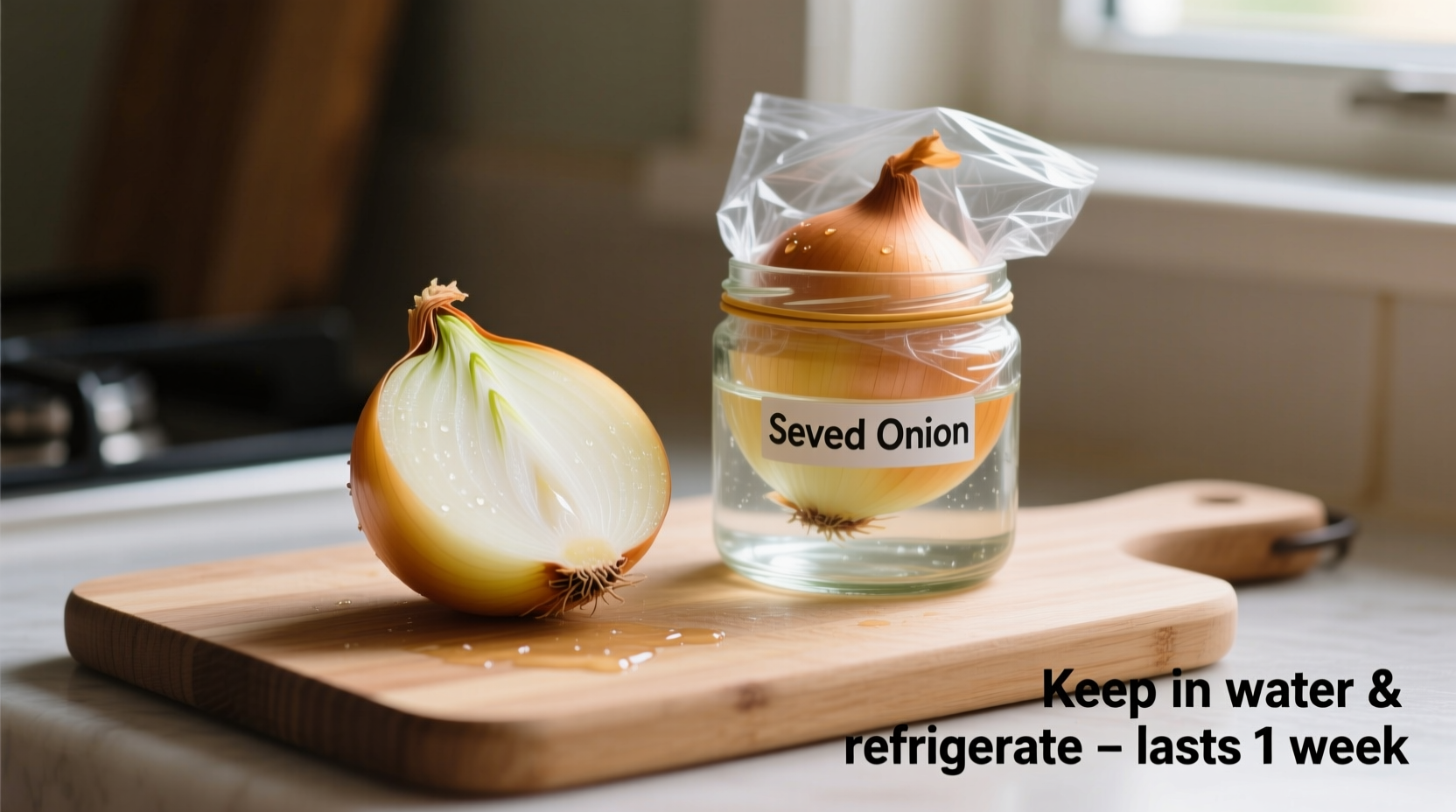Nothing's more frustrating than wasting half an onion after cooking. As a professional chef who's taught thousands of home cooks proper food preservation techniques, I've seen how improper storage leads to spoiled ingredients and unnecessary food waste. The good news? Saving half an onion properly takes just 30 seconds and preserves both flavor and texture.
Why Proper Onion Storage Matters
Onions contain sulfur compounds that oxidize rapidly when exposed to air, causing them to deteriorate quickly. According to USDA food safety guidelines, improper storage of cut produce accounts for nearly 20% of household food waste. When you save half an onion correctly, you're not just preserving ingredients—you're maintaining the delicate balance of flavors that make your dishes exceptional.
Step-by-Step Methods for Saving Half an Onion
Refrigeration Method (Best for Short-Term Use)
This is the most practical approach for home cooks needing to use their half onion within a week:
- Place the cut side down on a clean surface
- Wrap the exposed surface tightly with plastic wrap, pressing out air pockets
- Alternatively, place cut-side down in an airtight container
- Store in the refrigerator's crisper drawer (40°F or below)
- Use within 7-10 days for optimal flavor
Professional chefs prefer this method because it maintains the onion's cellular structure, preventing moisture loss that leads to mushiness.
Water Storage Method (For Immediate Next-Day Use)
When you'll use the remaining onion within 24-48 hours:
- Place the cut onion in a glass container
- Cover completely with cold water
- Store in refrigerator
- Change water daily
This technique works well for sweet onions that tend to dry out faster, but changes the texture slightly—making it better for cooked dishes than raw applications.
Freezing Method (Long-Term Solution)
For meal preppers or those who cook in batches:
- Chop the remaining onion into your desired size
- Spread pieces on a parchment-lined baking sheet
- Flash freeze for 1-2 hours
- Transfer to labeled freezer bag, removing excess air
- Store for up to 6 months
Freezing preserves flavor compounds effectively, though texture changes make frozen onions unsuitable for raw applications but perfect for soups, stews, and cooked dishes.
| Storage Method | Shelf Life | Best For | Texture Preservation |
|---|---|---|---|
| Refrigeration (wrapped) | 7-10 days | Most cooking applications | ★★★★☆ |
| Water storage | 2-3 days | Cooking within 48 hours | ★★★☆☆ |
| Freezing (chopped) | 6 months | Cooked dishes only | ★☆☆☆☆ |
| Vacuum sealing | 10-14 days | Professional kitchens | ★★★★★ |
Critical Mistakes That Ruin Saved Onions
Avoid these common errors that accelerate spoilage:
- Leaving cut side exposed: Oxygen exposure causes rapid oxidation and spoilage
- Storing near ethylene-producing fruits: Apples and bananas release gases that speed deterioration
- Using damp containers: Excess moisture promotes bacterial growth
- Keeping in original mesh bag: Provides no protection for cut surfaces
How to Tell If Your Saved Onion Has Gone Bad
Check for these spoilage indicators before using:
- Darkened or blackened areas on cut surface
- Excessive sliminess or mushiness
- Unpleasant sour or ammonia-like odor
- Mold growth (discard immediately)
When in doubt, remember this food safety rule from the FDA: "When part of food shows spoilage, invisible bacteria may have spread throughout. When mold appears on hard vegetables like onions, cut off at least 1 inch around and below the mold spot."

Creative Uses for Saved Half Onions
Maximize your saved onion with these professional techniques:
- Create instant onion oil by steeping in olive oil for salad dressings
- Make quick pickled onions for tacos or salads
- Freeze with herbs in ice cube trays with olive oil for cooking bases
- Use in homemade stock instead of discarding
Frequently Asked Questions
Can you save half an onion at room temperature?
No, room temperature storage causes rapid spoilage. The USDA recommends refrigerating cut produce at 40°F or below. Half onions left at room temperature develop bacteria within 2 hours and become unsafe to eat.
How long does half an onion last in the fridge properly stored?
When wrapped tightly in plastic wrap or stored in an airtight container, half an onion maintains quality for 7-10 days in the refrigerator. After this period, flavor diminishes and texture deteriorates, though it may remain safe to eat for a few additional days if no spoilage signs appear.
Should you wash half an onion before storing it?
No, washing introduces excess moisture that accelerates spoilage. Professional chefs recommend storing cut onions completely dry. If your onion got wet during preparation, pat it thoroughly with a clean paper towel before wrapping.
Can you freeze half an onion without chopping it?
Yes, but with limitations. Whole half onions freeze with texture changes that make them difficult to chop when frozen. For best results, either chop before freezing or wrap tightly in multiple layers of plastic wrap plus a freezer bag. Frozen whole half onions work well for soups where exact shape doesn't matter.
Why does my saved onion taste bitter?
Bitterness develops when sulfur compounds oxidize. This happens when onions aren't wrapped tightly, exposing cut surfaces to air. To prevent this, ensure no air contacts the cut surface by pressing plastic wrap directly against it or using vacuum sealing for optimal results.











 浙公网安备
33010002000092号
浙公网安备
33010002000092号 浙B2-20120091-4
浙B2-20120091-4